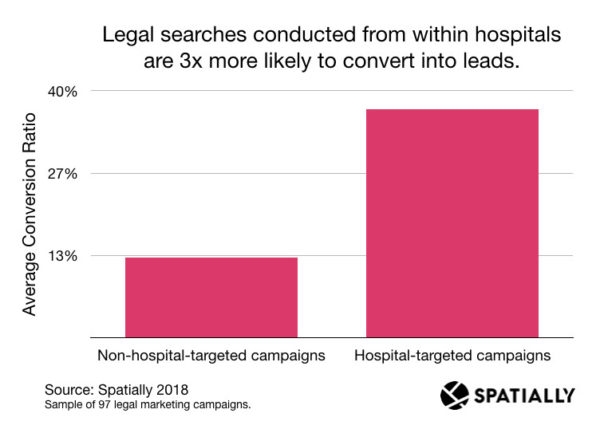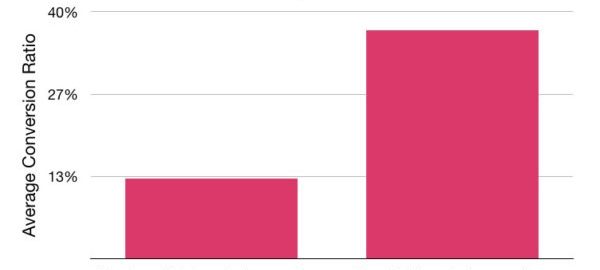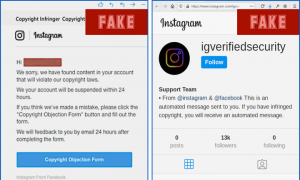— October 19, 2018
Ice cream.
When someone types the words “ice cream” into Google, there isn’t an ice cream ball’s chance in an oven that any marketer or advertiser would truly know what that searcher is looking for.
They could be looking for chocolate ice cream or perhaps a chocolate-covered strawberry ice cream. They might be looking for an ice cream shop nearby or maybe even a famous one they saw on Diners, Drive-Ins and Dives.
Heck, they might not even be looking for ice cream at all. They might be looking for a song, video, movie or book with the word ice cream in its title.
For a very long time, marketers and advertisers were forced to play the crazy ridiculous game of guessing what on earth their prospective customers were searching for and distilling their products and services down into single, biddable keywords.
As you can probably infer, this strategy wasn’t very effective, and marketers and advertisers found themselves playing a non-stop game of pin the tail on the donkey.
Fortunately, keyword intent was born.
Fortunately for brands everywhere, marketers and advertisers got smarter. They started targeting high-intent keywords. Or, in other words, keywords that were more specified and less ambiguous than “ice cream” and searched for in such a way that they demonstrated the prospective customer had the intention of making a purchase.
So, instead of marketers and advertisers bidding on the broad keyword “ice cream,” they started targeting searches like “ice cream shop near me” and “best ice cream parlor.”
When a keyword is more intentional, marketers and advertisers can better and more accurately match their products or services with what the prospective customer is searching.
In other words… while “Ice Cream” might lead down any number of paths, a search for “ice cream shops near me” lets marketers and advertiser match the keyword with an advertisement for a Haagen-Dazs or McDonald’s or Grandpa Henry’s Ice Cream Parlor in close proximity.
However, while keyword intent was and still is a huge step in the right direction for marketers looking to maximize their ROI and not play the guessing game with ambiguous search terms, it might not be the only answer to ensure their ads are getting in front of the right audience.
Enter location intent.
While “how” someone searches something can give marketers and advertisers a peek into what the prospective customer is searching for, it can be taken to a whole new level by adding the element of location. Or, in other words, “where” the individual is making the search.
Let’s forget about our sweet tooth for a moment and use the search term “lawyer near me” as an example. Depending on where an individual is searching for a lawyer can tell marketers and advertisers an immense amount about what they’re looking for:
- If someone is searching “lawyer near me” at a companies headquarters, they are probably looking for a corporate lawyer.
- If someone is searching “lawyer near me” in the waiting room of an emergency room, they might be looking for a personal injury lawyer.
- If someone is searching “lawyer near me” in a mechanic shop or at the busy intersection of a highway, they’re probably looking for an auto accident lawyer.
Where someone searches something can be just as indicative of their intent as how someone searches. And this a concept we at Spatially refer to as “location intent.”
While this strategy has been heavily popularized by law firms (for which, it has boosted conversion rates by up to 310%), we’re starting to see traction in business-to-business and business-to-consumer campaigns as well. In fact, most recently the strategy has been adopted by auto dealers targetting prospective customers searching for price comparison from competitor’s lots.
Consider the bolded text above for a moment, and you’ll begin to understand just how powerful location intent is. The searcher is on a car lot searching for pricing comparisons… can you think of a better example of a person being ready to pull the trigger on a purchase?
Keyword intent? Check.
Location intent? Checkmate.

Targeting for location intent improves conversion on the average attorney marketing campaign by 310%. Source: Spatially.
The incredible power of location intent doesn’t end with lawyers and auto dealers though. Look below for some other industries where we can see location intent being extremely lucrative:
- Tourism companies target local landmarks and tourist traps to reach visitors.
- Recruiters targeting potential job hoppers at rival campuses.
- Software companies targetting potential buyers at high-tech coworking spaces.
When you take the already immensely powerful concept of keyword intent and combine it with location intent you create an entirely new strategy, one that bridges the gap between the digital and physical world. And, for large industries like travel, recruiting, software, and law… these leads can result in thousands… if not millions of dollars in additional revenue.
Digital & Social Articles on Business 2 Community
(33)
Report Post






